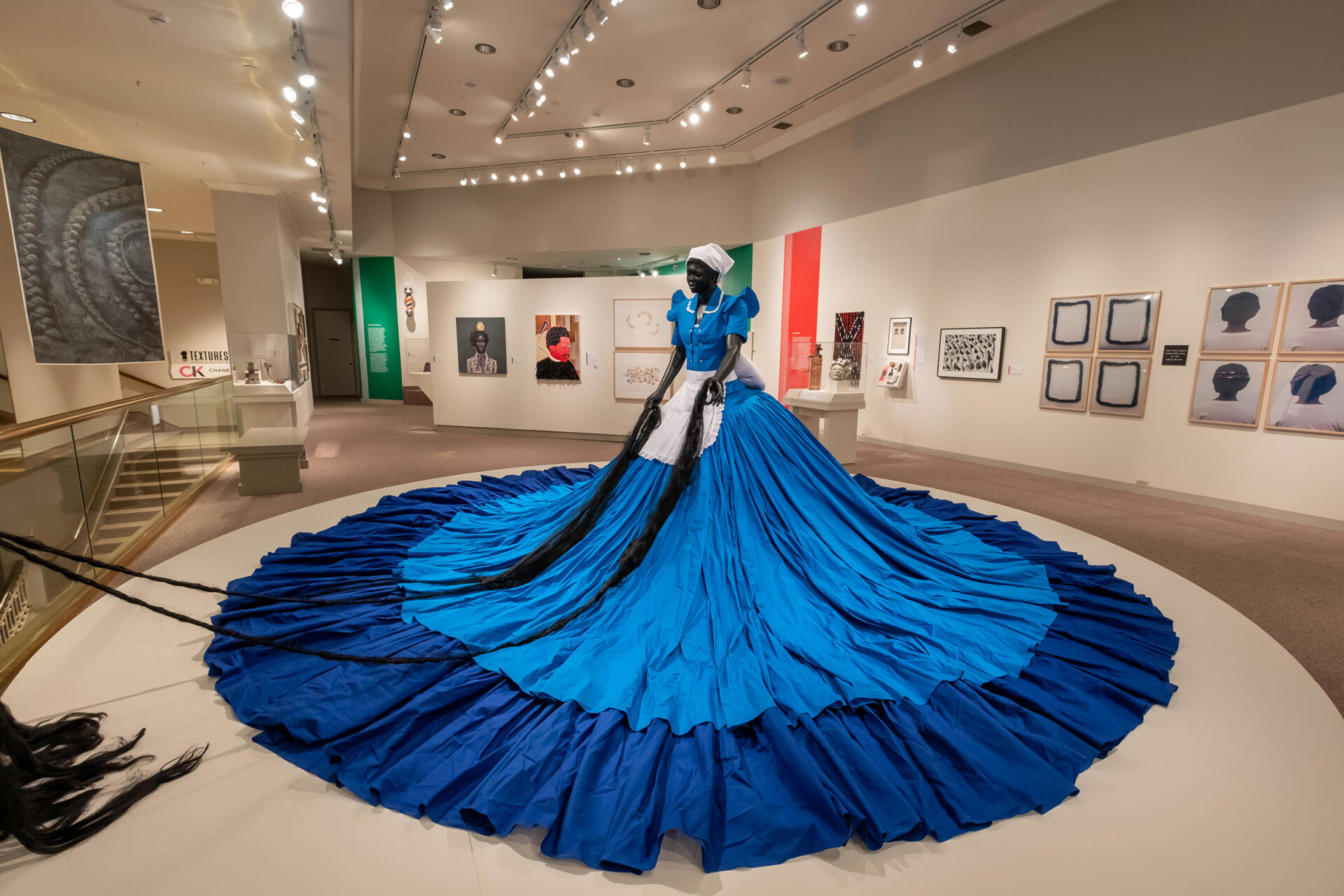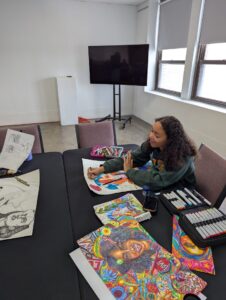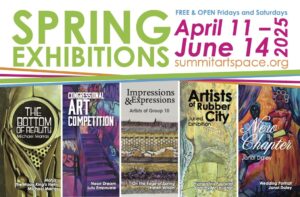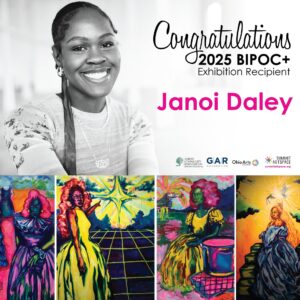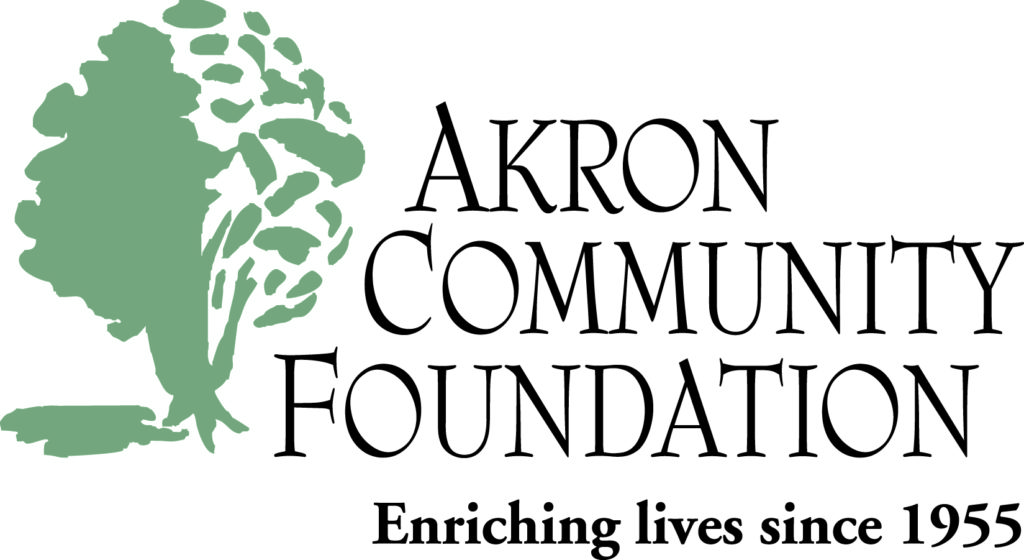TEXTURES: the history and art of Black hair
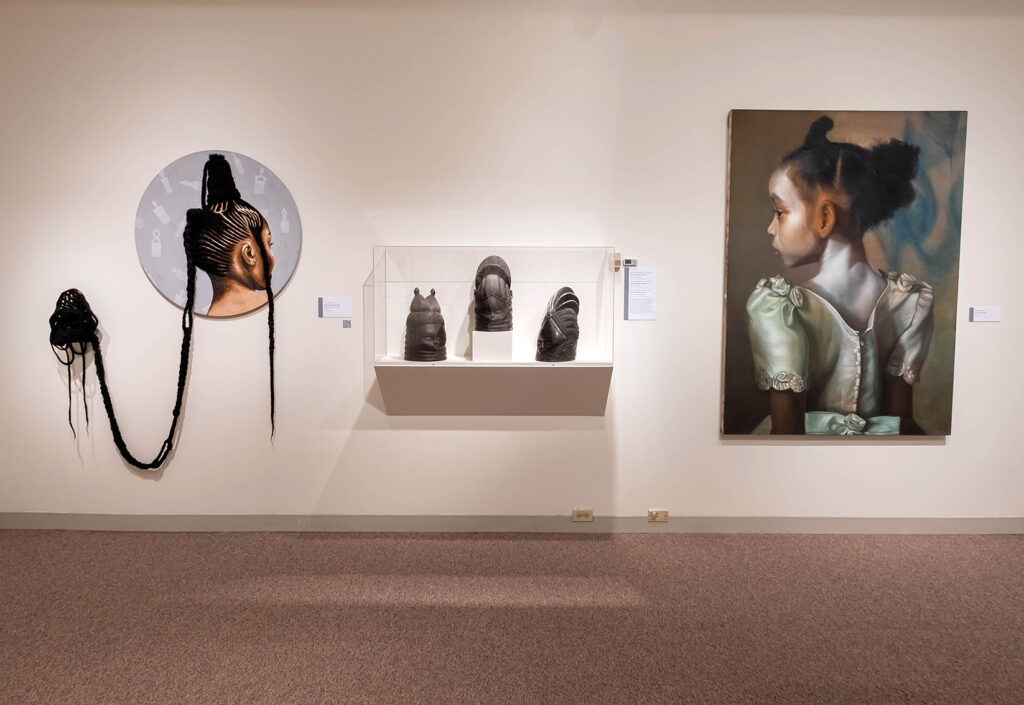
The Collaborative Project award recognizes an original project in the performing, visual, or multidisciplinary arts illustrating the power of collaboration to advance and support arts and culture in the community.
To purchase tickets to the Arts Alive Awards gala on June 23 or watch the pre-recorded virtual ceremony broadcast, click here.
The Kent State University Museum exhibition “TEXTURES: the history and art of Black hair” has been awarded the Arts Alive award for Collaborative Project for 2022.
The exhibition was co-curated by Dr. Tameka Ellington, former associate professor of fashion and interim assistant dean for the College of the Arts at KSU, and Dr. Joseph L. Underwood, associate professor of art history at KSU. It is accompanied by a 200-page catalog, which is now in its third printing, published and distributed by Hirmer Publishers. The catalog essays were written by the co-curators alongside contributing authors and scholars Dr. Ingrid Banks, Dr. Afiya Mbilishaka, Dr. Zoé Samudzi, and Lori L. Tharps, with a foreword by KSU Museum Director Sarah Rogers. Additionally, KSU art education faculty, Juliann Dorff and Dr. Linda Hoeptner Poling, created the educator resources for K-12 teachers along with M.A. art education graduate student, Christina Timmons.
TEXTURES synthesizes research in history, fashion, art, and visual culture to reassess the “hair story” of peoples of African descent. Long a fraught topic for African Americans and others in the diaspora, Black hair is here addressed by artists, barbers, and activists in both its historical perceptions and its ramifications for self and society today. Combs, products, and implements from the collection of hair pioneer Willie Morrow are paired here with masterworks from artists including James Van Der Zee, Sonya Clark, Lorna Simpson, Mary Sibande, and Zanele Muholi. Exploring topics such as the preferential treatment of straight hair, the social hierarchies of skin, and the power and politics of display, TEXTURES is a landmark exploration of Black hair and its important, complicated place in the history of African American life and culture.
Dr. Tameka Ellington is a Fashion Scholar, Educator, Motivational Speaker, and expert on diversity, equity, and inclusion initiatives. She has almost 20 years of experience as a researcher on Black dress and hair. She has published several academic journal articles on Black hair and is in the process of completing a book entitled, “Navigating the Black Hair Phenomenon in a White World.” She is also author of the motivational memoir, Make Fear Your Superpower, where she discusses raw examples of how everyday fears and anxieties can become transformed into unstoppable strength, as well as author of Be the GOAT: A Career Readiness Manual for First Generation Students and Young Professionals, a guide to help those who are first gen move beyond their familial barriers and into a career that they love.
Dr. Joseph L. Underwood earned his B.A. in Art History and French Language & Literature from Transylvania University and his M.A. and Ph.D. in Art History & Criticism from Stony Brook University. He is a scholar and curator whose research focuses on artists from the African continent and the Diaspora. As an art historian of the modern and contemporary periods, his projects focus on the mid-to-late twentieth century and encompass themes from the Postwar era: including post-colonialism, (trans)nationalism, globalization, and biennialism.
His research is especially focused on Francophone West and North Africa, charting how artists have created transnational networks of influence since the mid-20th century. Dr. Underwood teaches courses that cover historical, recent, and contemporary African art, as well as the history of exhibitions, museology, and the politics of display. His academic presentations and publications are complemented by curatorial practice, having contributed to exhibition projects at the Musée Boribana (Dakar, Senegal), Metropolitan Museum of Art, The Brooklyn Museum, the Dakar Biennale for Contemporary African Art, and the Smithsonian National Museum of African Art. He frequently recruits students to assist with the planning, design, and programming of his exhibitions, as well as with the related publications.

